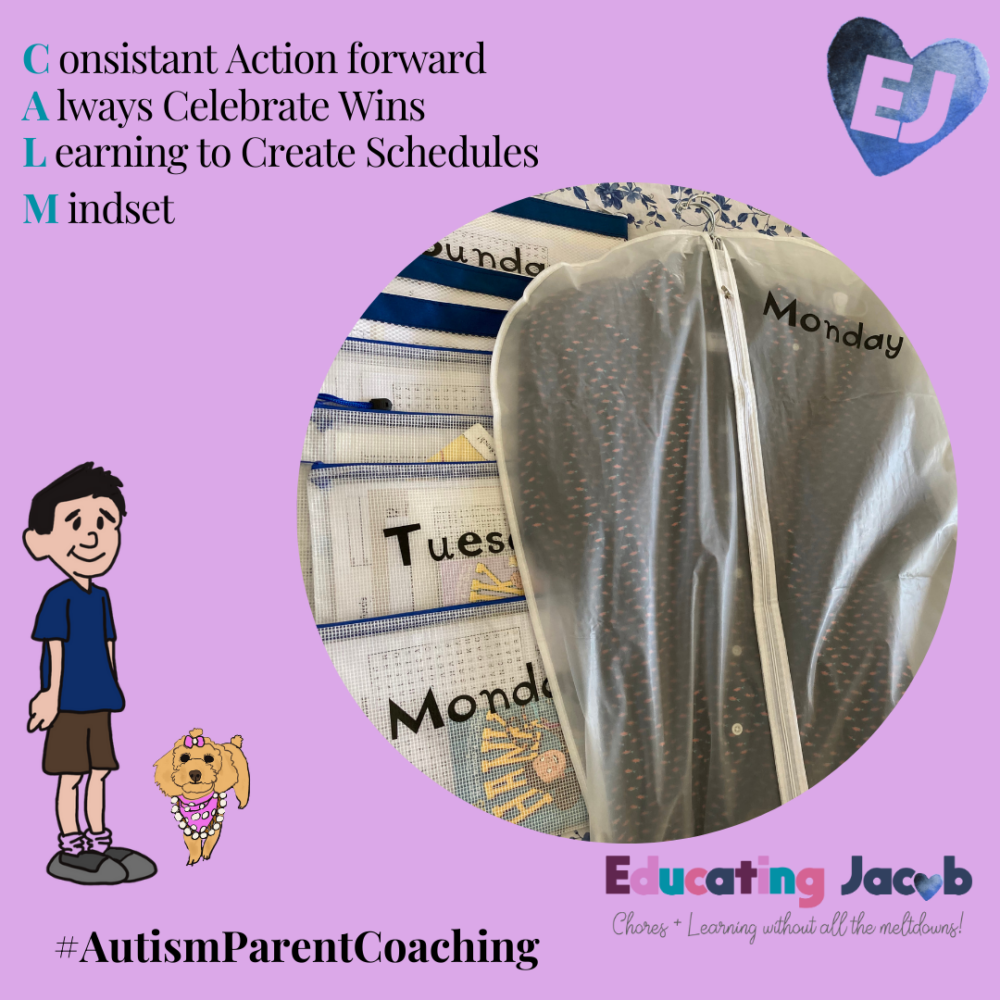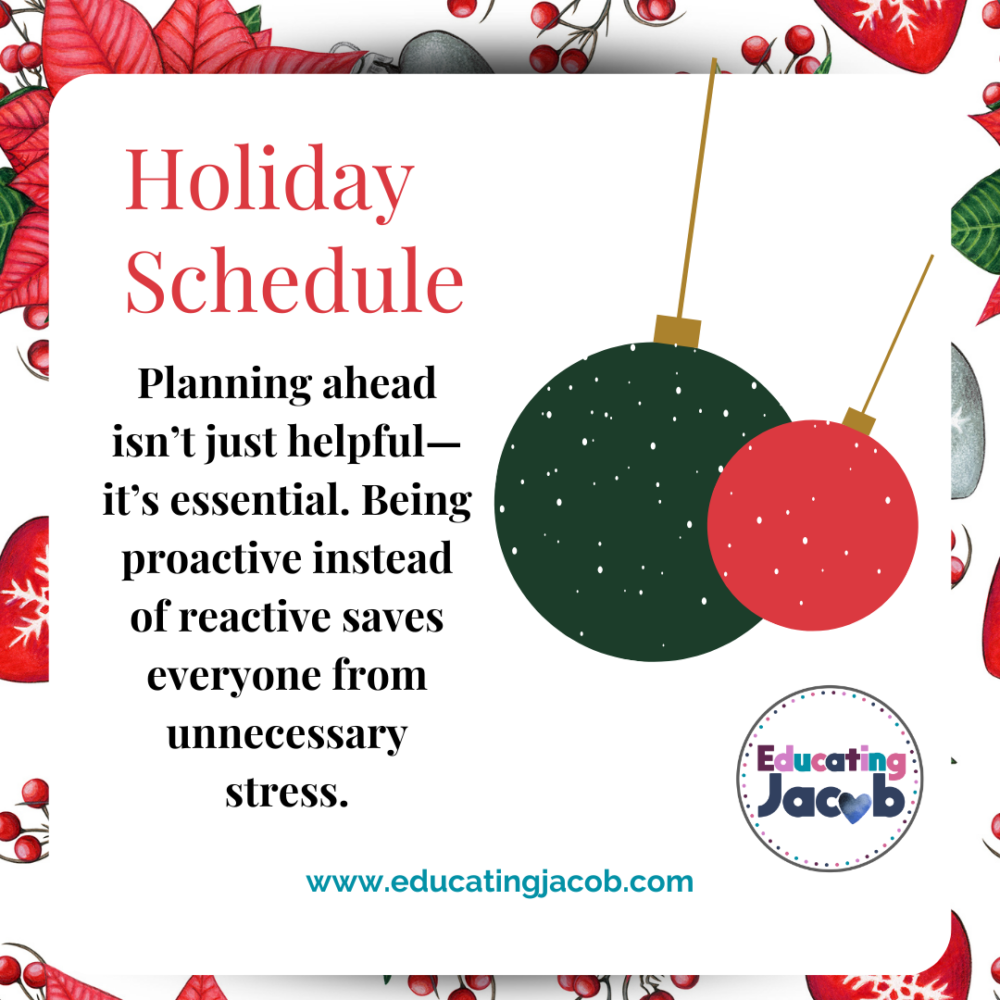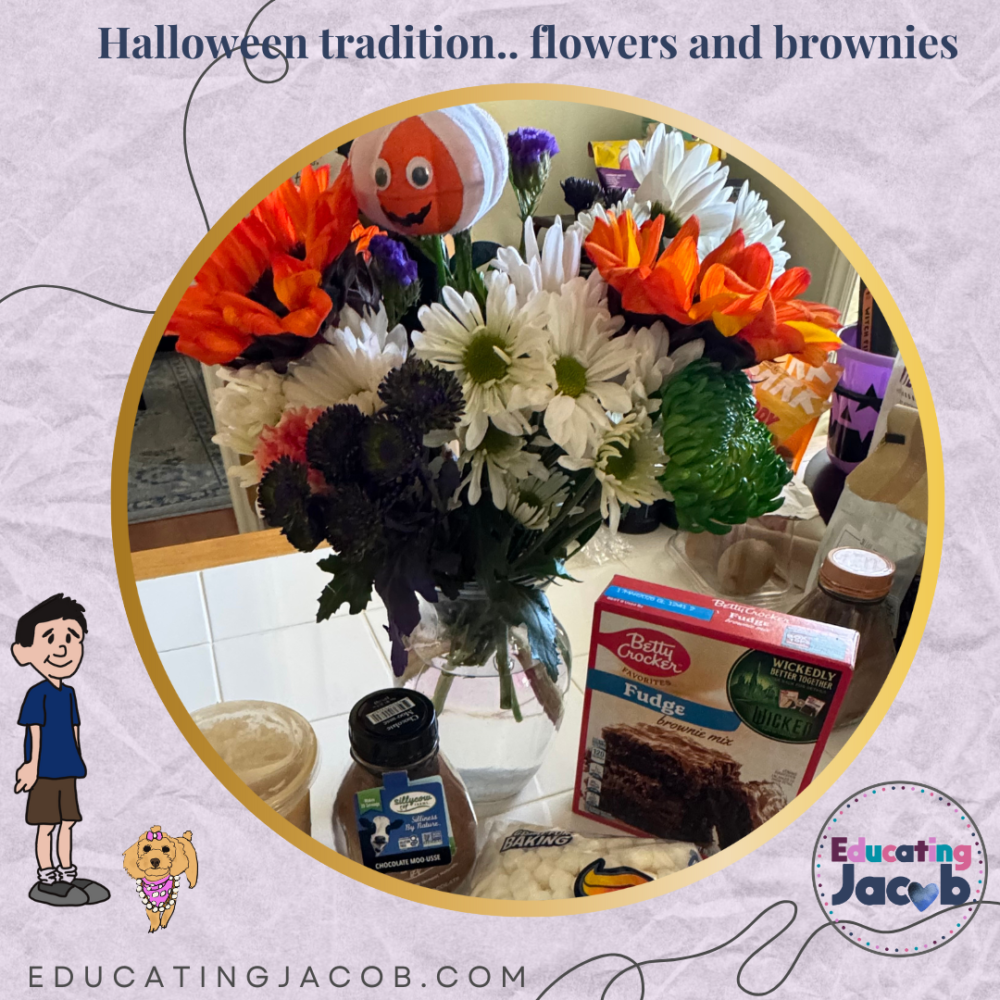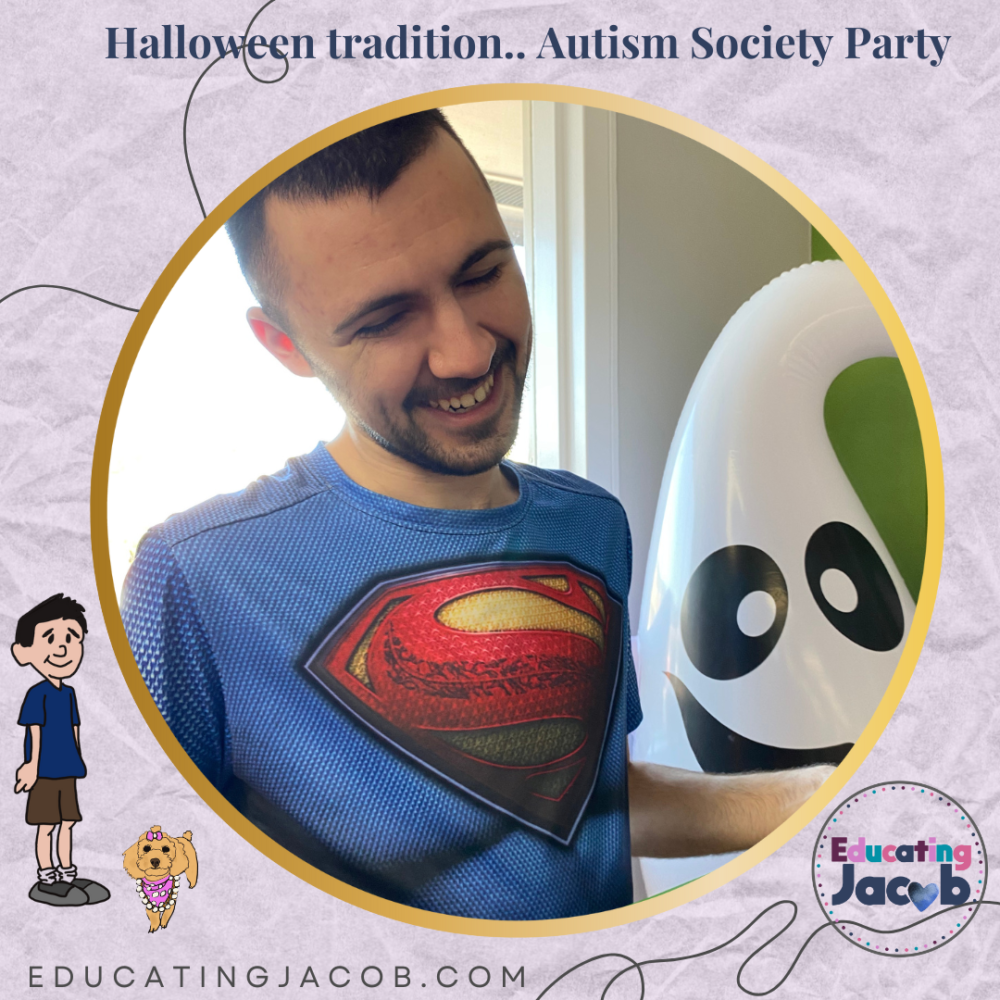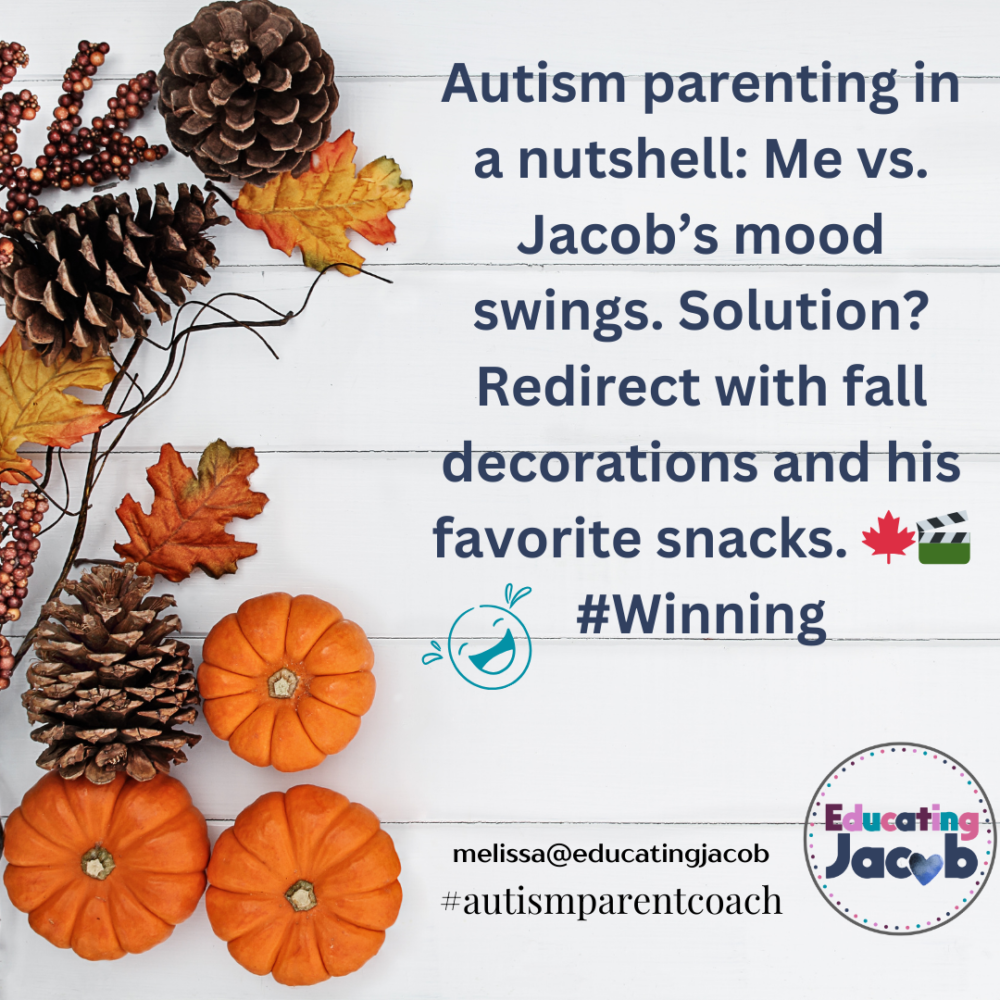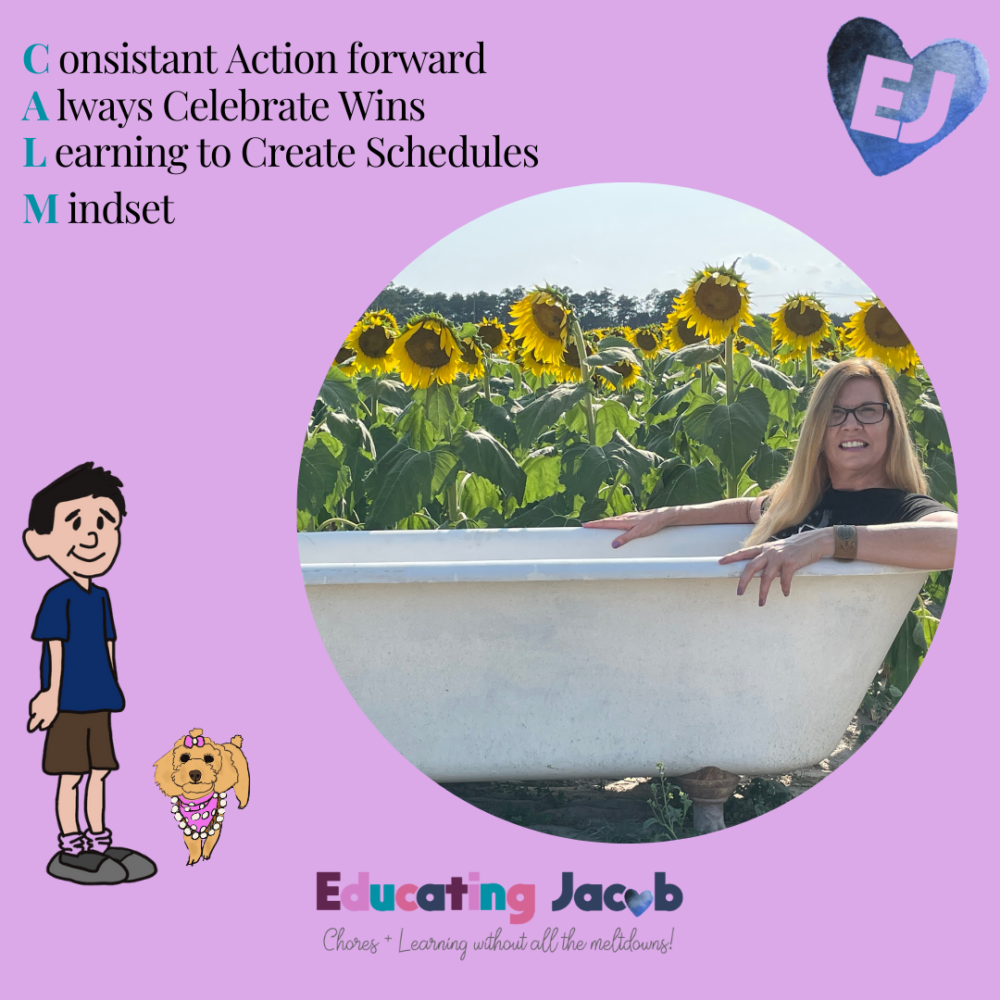Visual Schedules, What does this make possible for autism Level 2 and 3?
Visual Schedules for Autism
Discover how visual schedules for autism can transform daily life for families with children on the spectrum (level 2 and 3). Learn how they reduce anxiety, increase independence, and create calm.
When Chaos Ruled Our Home 🌪️
Chaos used to rule in our home.
When Jacob was younger, Autism Level 3 meant he needed full support. Every transition brought stress, every change brought resistance, and every day felt unpredictable for both of us. I was trying to parent from a place of love and structure—but what I got back was shutdowns, meltdowns, and confusion.
That’s when I realized: I had to stop hoping for calm and start building it.
And the very first tool that made calm possible in our home was visual schedules for autism level 2 and 3. Teaching Chores: Building Life Skills with Patience and Support for Autism
What Are Visual Schedules? 📊
Visual schedules are picture-based tools that help children see what’s going to happen next. For autistic children—especially those with communication challenges or sensory processing issues—being able to see their day creates understanding, safety, and a sense of control.
This isn’t just a classroom strategy. This is a life strategy—especially for families with kids on the autism spectrum at Level 2 and 3.
The Bridge Between Chaos and Calm 🌉
Before I could teach Jacob anything, I had to teach him who was in charge—not in a power struggle kind of way, but in a safe, loving, dependable kind of way. Jacob needed to know I wasn’t just going to spring things on him. He doesn’t like a lot of language either. What he needed was consistency, clarity and authority without fear.
Visual schedules became the bridge to that understanding.
When I showed him what was going to happen—even if it was a new or unwanted task—he felt less anxiety. Less need for control. Less shutdown.
And for the first time, he could respond, not react.
Now to be clear, the first time we try anything new there’s resistance. However, once he started using visual schedules for autism level 2 and 3 and began craving the structure and routine they provide, it became much easier to introduce new activities and eventually incorporate them happily into his routine! Come on Autism Thrive Tribe, 3 Ways to ditch chaos and get Happy!
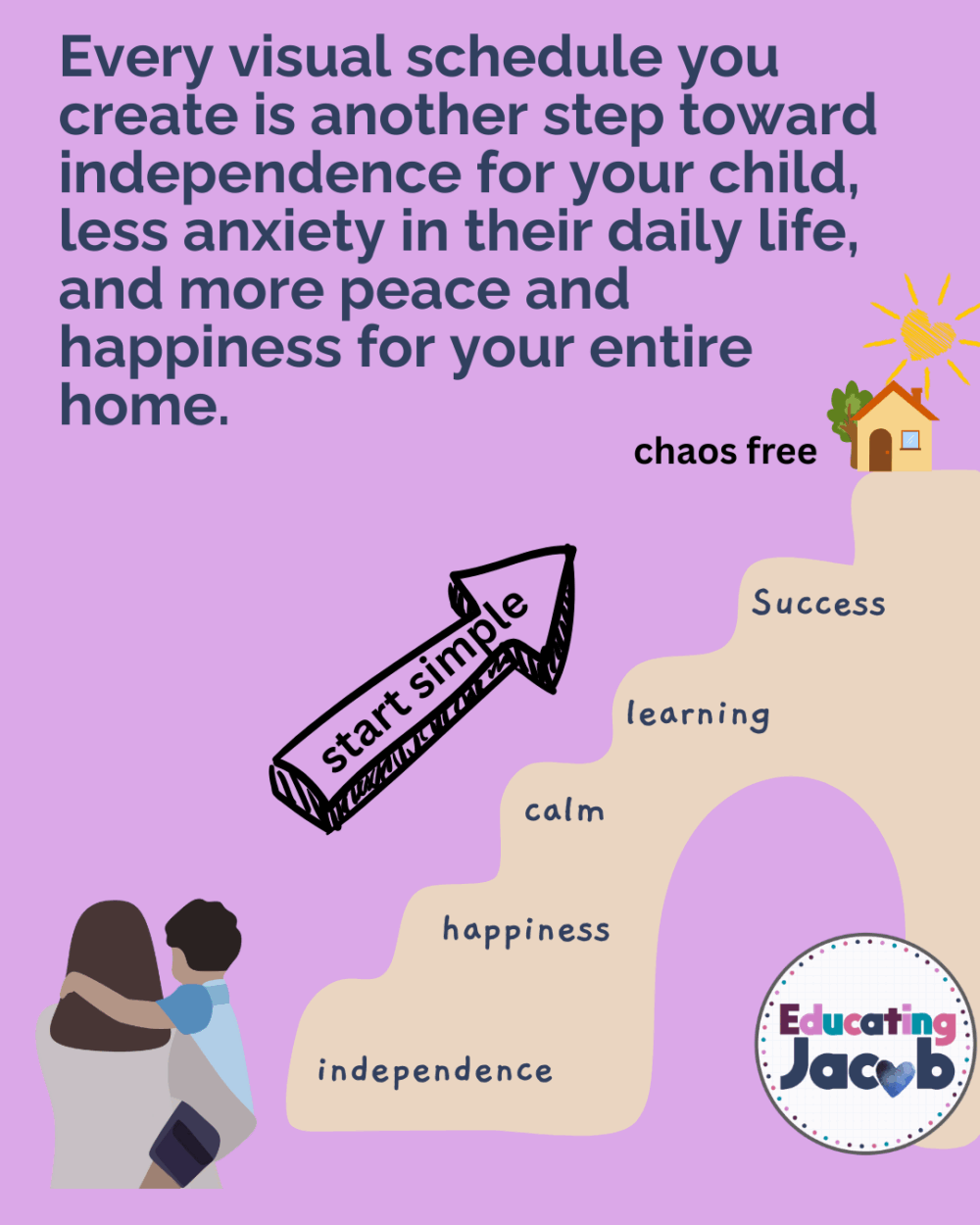
What Visual Schedules Make Possible 🌟
Here’s what happened when we started using visual schedules at home—and what can happen for your child too:
1. Decreased Anxiety 😌
Children with Level 2 or 3 autism often experience intense anxiety when they don’t know what to expect. Jacob would shut down when faced with too much verbal communication due to his receptive and expressive language delays. A visual schedule removes the guesswork. Suddenly, the world makes sense.
2. Fewer Meltdowns 🧘♂️
With a predictable structure, transitions are smoother. Jacob no longer needed to fight to feel safe—he saw what was next and could prepare mentally and emotionally. If he was pushing boundaries, he understood that bigger rewards came with completing tasks as asked. We celebrated all small approximations, but the big payout came when the goal was achieved.
3. Improved Communication 💬
Before Jacob had words, visual schedules were our language. Alongside a few signs, they gave us a way to understand each other without all the confusing words he couldn’t process yet.
4. Real Independence 🚀
Visual schedules empowered Jacob to start doing things on his own. From brushing his teeth to transitioning to the car, he could take action without waiting for me to guide every step—teaching him that he could be independent.
5. More Joy and Less Helplessness 🎉
So many autism parents (including me) over-help because we don’t want our child to fail. But if we never let them struggle a little, they don’t get to learn or grow. Visual schedules for autism level 2 and 3 create a safe space where kids can try, succeed, and feel proud—without chaos.
How We Use the CALM Framework 🧠
At Educating Jacob, we built our whole approach around the CALM framework:
C: Consistent Action Forward ➡️
- We use the schedule every day, even when it’s hard or inconvenient.
A: Always Celebrate Wins 🏆
- Every completed task, every independent transition—it’s a celebration!
L: Learning to Create Schedules 📝
- We design the visual tools that work best for Jacob—and for other families in our community.
M: Mindset 💭
- This isn’t about perfection. It’s about building peace one day at a time, knowing that calm is possible.
Beyond Schedules: Extra Tools for Success 🛠️
Visual schedules are just one piece. With Jacob I use:
- Social stories 📚 to introduce new events
- Video modeling 📱 to reinforce routines (seeing himself succeed helps Jacob feel confident!)
- Redirection paired with visuals 🔄 to keep us out of power struggles and focused on solutions
These tools work together to build a calm, chaos-free environment—where your child can learn, grow, and enjoy life more. We celebrate all small wins but we never bribe. We have supportive tools (snacks, sensory toys/breaks, etc.) but never resort to begging. Instead, we redirect and gently remind of the reward! Help! 3 Ways a schedule can help sensory issues and communication barriers? #Autism Challenges🧩
Starting Your Visual Schedule Journey 🗺️
Here are some simple steps to begin:
- Start small 🐣 – Begin with just 2-3 activities your child already knows
- Use clear images 🖼️ – Photos or simple icons work best
- Be consistent 🔄 – Use the schedule every single day
- Celebrate successes 🎊 – Make a big deal of completed tasks
- Gradually expand 📈 – Add new activities as comfort grows
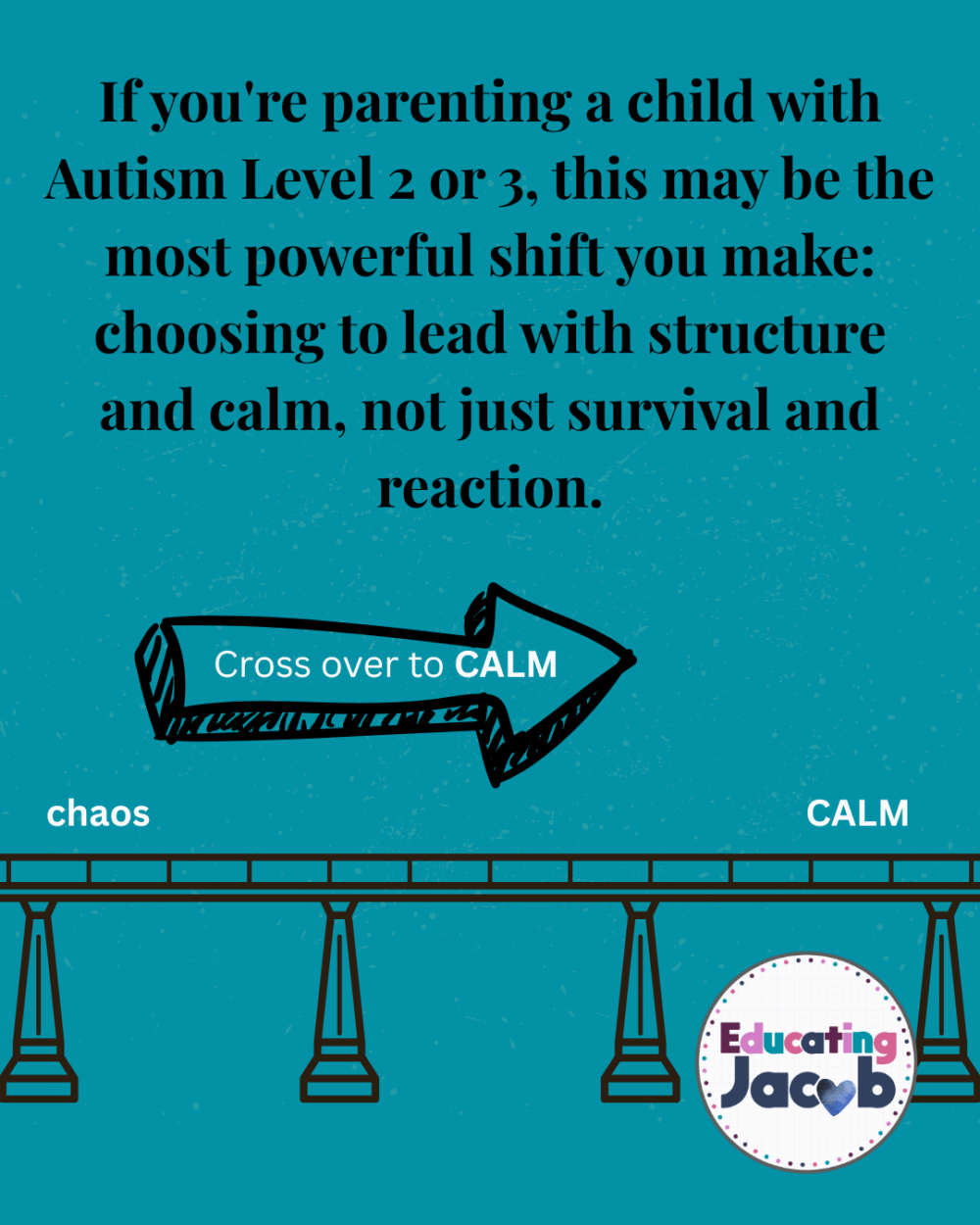
Final Thoughts for Autism Parents ❤️
Visual schedules won’t solve every challenge overnight, but they will give you a way forward.
If you’re parenting a child with Autism Level 2 or 3, this may be the most powerful shift you make: choosing to lead with structure and calm, not just survival and reaction.
You can be in charge. Your child can thrive. Your home can have peace again.
Start with one simple visual schedule, and watch the transformation begin. With Jacob I started simple and with things that he already knew how to do> This way I was setting him up for success and teaching him that schedules are helpful, not restrictive. Once they’re on board, you can gradually expand the schedule until you have a system that works for both your child and your family! https://www.merakilane.com/how-to-calm-an-autistic-child-31-tips-for-managing-autistic-meltdowns/
Remember: Every visual schedule you create is another step toward independence for your child, less anxiety in their daily life, and more peace and happiness for your entire home. We’re cheering you on! 💪
Want a community? Join ➡️ Autism Thrive Tribe to share and learn from others who understand your journey.


